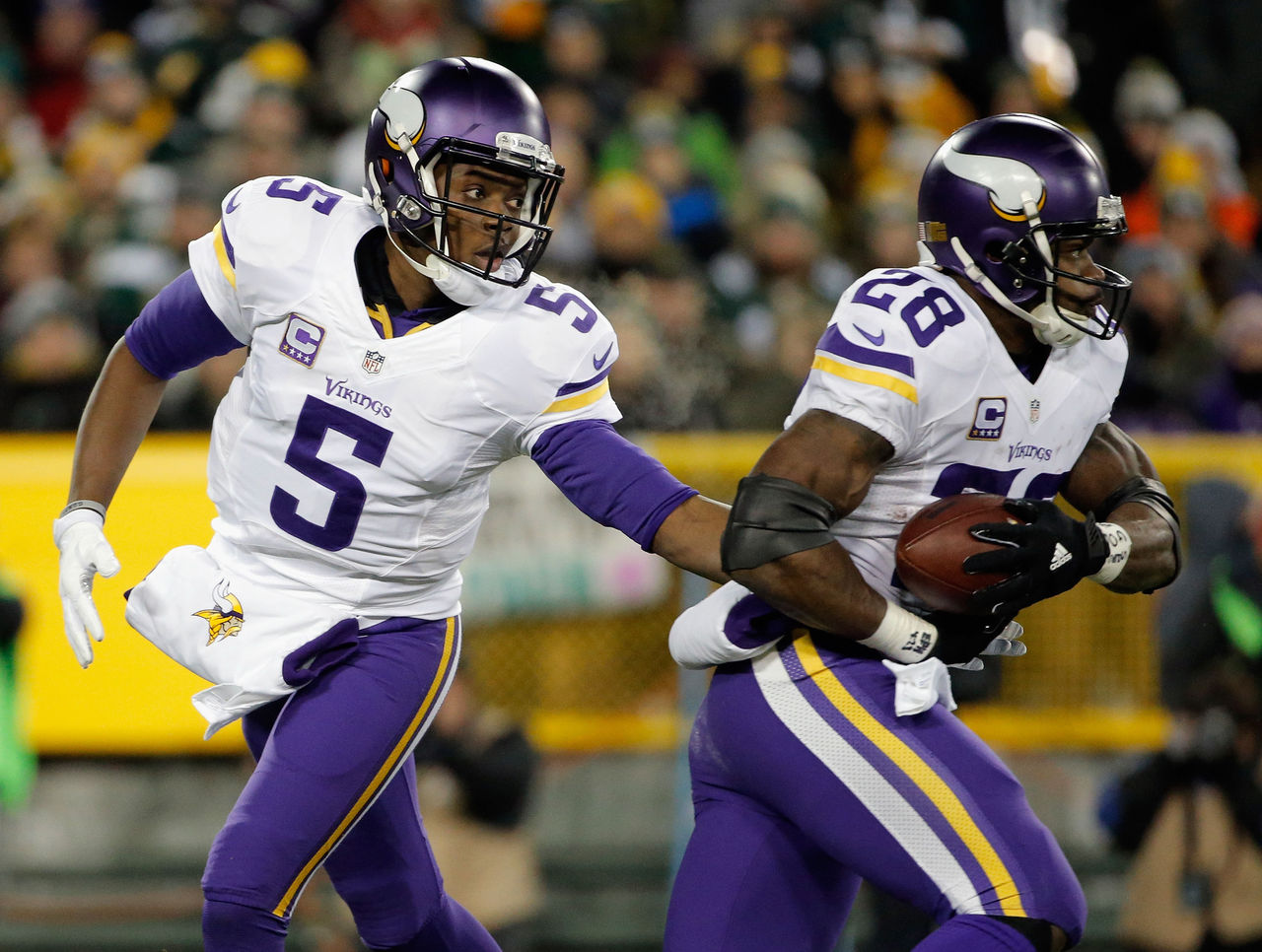Building a winning fantasy team through trades
When it comes to fantasy football glory, drafting is only half the battle.
From the moment you solidify your roster, you should be looking to improve it. Fantasy title winners rarely finish with a roster that looks even remotely close to the one they drafted - and many of their key players are acquired via well-executed deals throughout the season.
Here's how to improve your team through trades:

Handcuff running backs
At the draft, you should handcuff as many backup running backs as possible to fill your bench spots. Multiple good running backs are tough to come by, particularly in deeper formats.
Running backs often wind up getting hurt, making it that much more important to have depth at the position for your own team. Having an abundance of capable running backs will also lead to an increase in trade leverage once an owner who is thin at the position begins accumulating injuries.
Of the top 13 running backs in 2015 standard leagues, only Adrian Peterson and Matt Forte were consensus first-round picks. The rest consisted of guys like Devonta Freeman, who got a chance to play early on because of Tevin Coleman's injury and ran away with the job. Others include afterthoughts like Doug Martin, Chris Ivory and Danny Woodhead.
It's nice to have a player like Le'Veon Bell on your team, but don't be afraid to draft WRs in the early going and just stockpile running backs in the mid-to-late rounds. If you draft enough of them, you'll certainly hit some home runs.
Don't choose just any backup running back, though. Target teams with a run-heavy attack in friendly offensive schemes. Buffalo, Carolina, Minnesota, Kansas City and Denver are great examples.
Be active on the waiver wire
Many times the players involved in a trade, whether key pieces or secondary additions, are guys added from the waiver wire.
Any time a player looks as though he could potentially have a prominent role, add him immediately. Any time there's an injury to a running back, regardless of how long, pick up his backup.
The key here, again, is the running back position. Rushers usually garner the most value in trades because it always seems as though players in your league will be desperate for a back at one point or another.

Master multi-player trades
Multi-player deals are an outstanding way to win a trade in your league. Nine times out of 10, the owner getting the best player in the deal usually wins the trade. Always value quality over quantity when it comes to multi-player trades.
Once again, trades like these usually stem from an owner's need for a running back or two. If you have a surplus of legitimate running backs, an owner may be willing to part ways with an elite QB, WR or TE.
Never lead with your best offer
This may be obvious, but it is still worth noting. Always low-ball an opponent with your first offer - not too much to the point where he will no longer be willing to negotiate with you, but enough that your potential trade partner will send a counteroffer.
Once that counter has been sent, take it a step up from your previous offer. You and your potential trade partner will likely then exchange counters until someone caves or a happy medium has been found.
It's important to acknowledge who is in the driver's seat during a negotiation. If you have a plethora of running backs and your fellow owner is in dire need of a back, then you have leverage. Use this to your advantage. Be willing to walk away and never settle.

Don't seem desperate
This mIGHT be hard to do, especially if you're in dire need at a specific position. However, it's important to let your potential trade partner know that you have other options (whether that's the truth or not).
If you're very interested in one player who you just missed on draft day, inquire about him early in the season. Check in with this player's owner periodically as the season unfolds. If this player's production begins to slip, you will be the first one he contacts if he's ready to sell low on him.
Buy low and sell high
This is a classic fantasy trading strategy. If an owner's star player isn't performing up to standards, he may be willing to part ways. This goes back to the previous step, but never seem too interested in a great player that is faltering; this might make his own reconsider dealing him.
A player might be underperforming for a variety of reasons. It could be due to a tough early schedule, or to injuries affecting his offensive line. The O-line often gets overlooked in fantasy, but it can affect the value of every skill player around them. Try to predict these trends.
Selling high can also be directly correlated to strength of schedule. Take former Jets RB Chris Ivory, who is now a member of the Jacksonville Jaguars. Last year, Ivory was averaging 19 fantasy points per game through Week 6, beating up on the Browns', Dolphins' and Redskins' run defenses. After Week 6, he only averaged eight fantasy points per game facing stiffer competition.
If an Ivory owner would have traded him after Week 6, they certainly could have brought back elite talent for a vastly unproven running back.